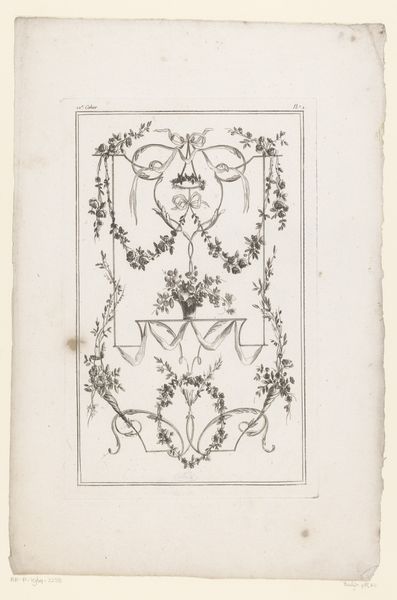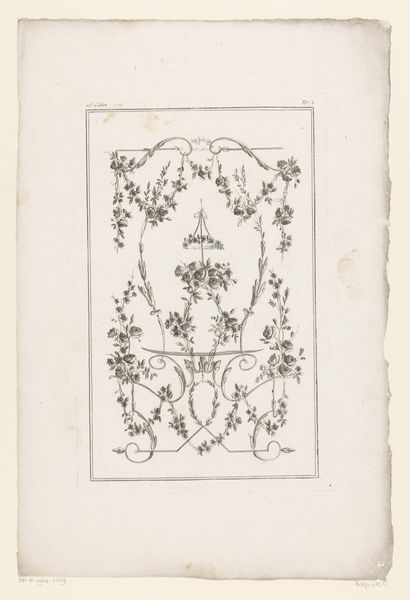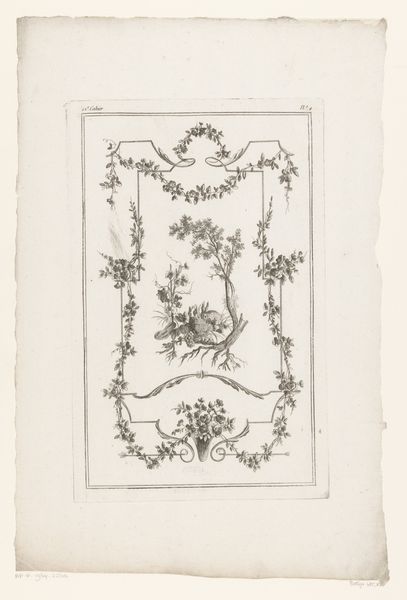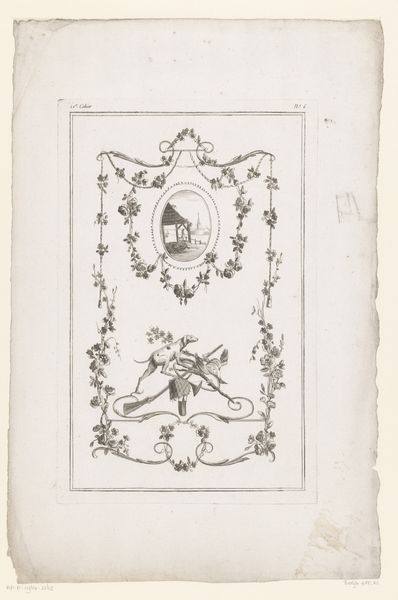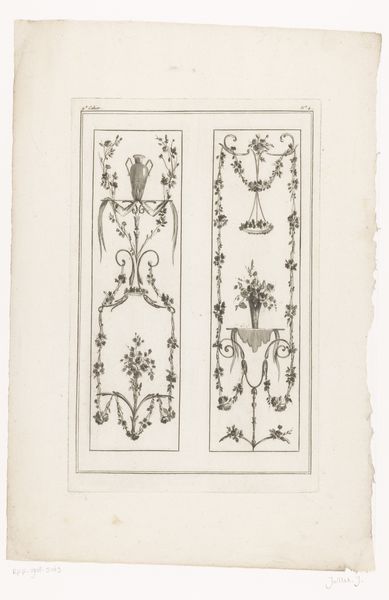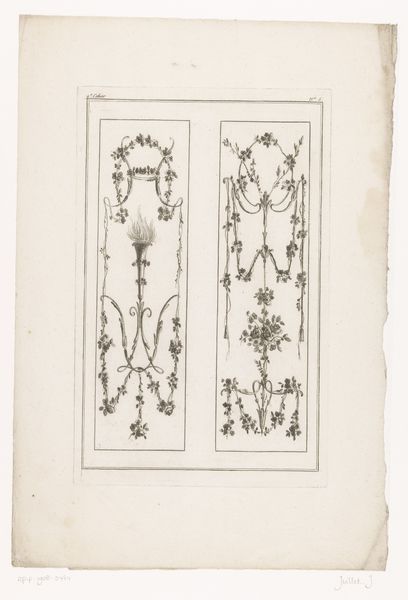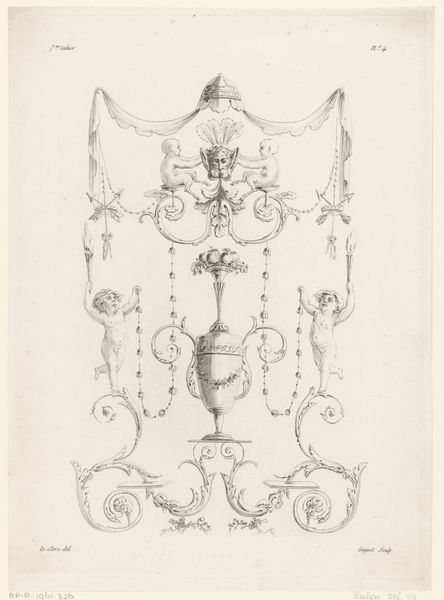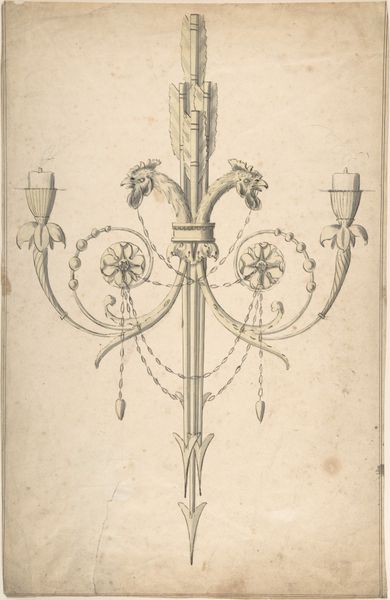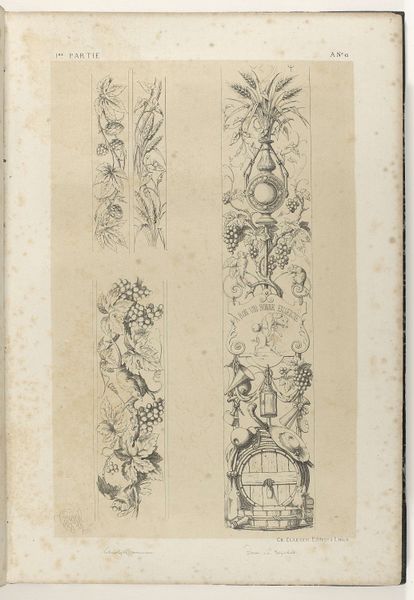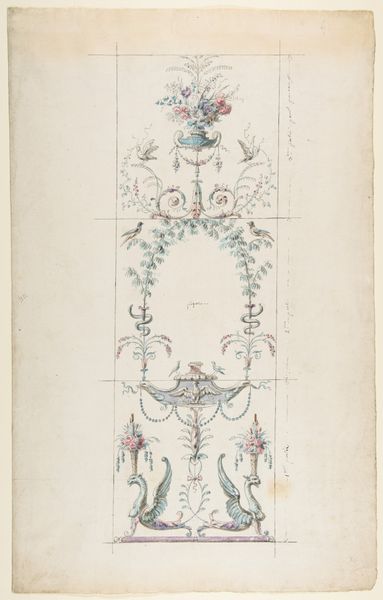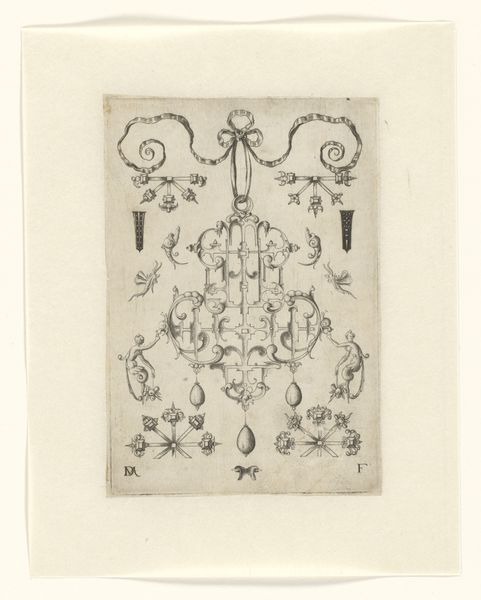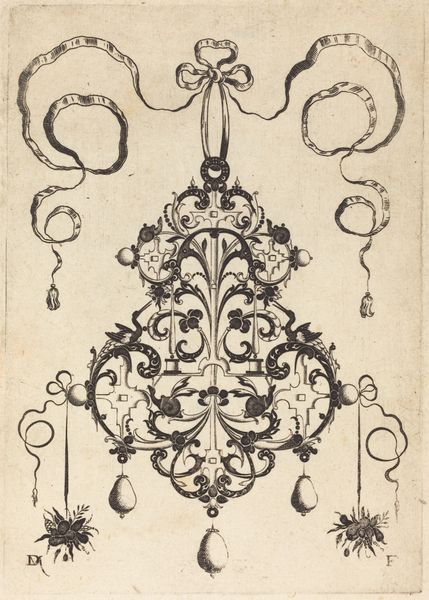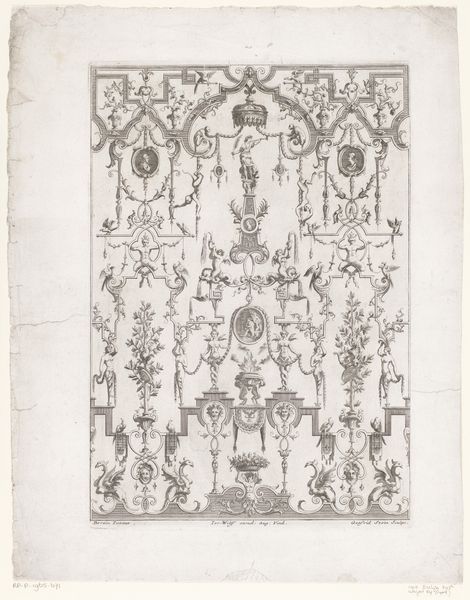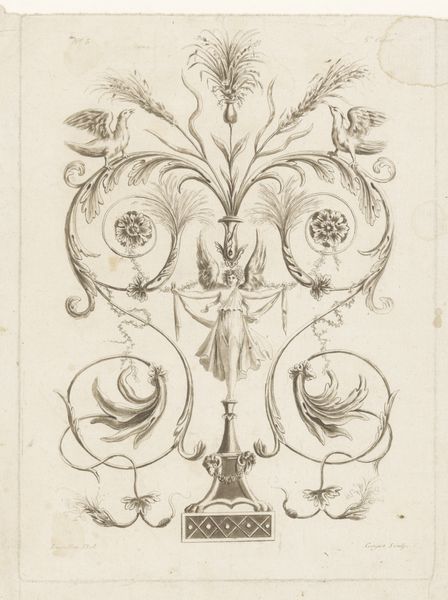
Dimensions: height 325 mm, width 208 mm
Copyright: Rijks Museum: Open Domain
Curator: This delicate print is titled "Paneel met medaillon met man in landschap," which translates to "Panel with medallion with man in landscape." It's attributed to Jacques Juillet and dates from 1777 to 1779. The piece you are looking at is an engraving on paper, held in the Rijksmuseum collection. Editor: It reminds me of those ridiculously ornate frames people used to put around portraits, but flattened, almost ghostly. I get this whisper of forgotten elegance. It's delicate and… maybe a little bit sad? Curator: You pick up on a central tension within baroque art, a blend of extravagance and underlying melancholy. Floral garlands are combined with rectilinear shapes. The central medallion depicting a pastoral scene feels… contained. These pictorial devices often invoked cultivated ideals about man's relationship with nature and ideas about beauty. Editor: "Contained" is spot on. It's like a beautiful thought trapped in a very fancy cage. I keep getting drawn to the figure in the landscape of the medallion, almost like she represents freedom. Maybe freedom contained or the desire to escape. Do you think the symbols surrounding that are intentional to that point? Curator: The figure indeed resonates with liberty and escape. Within the artistic milieu of the 18th century, such landscape vignettes evoked a classical past but served to heighten social ideals through symbolic recall. Often garlands symbolized the temporality of existence; here the medallion captures that temporality within a defined historical visual vocabulary of social order and balance. Editor: The fact that all these floral elements frame that small pastoral snapshot just reinforces this feeling. Like that little snippet of idyllic fantasy has the weight of keeping all this decoration alive and in its time frame. Curator: Exactly. These ornamental frames often refer to ephemeral displays of cultivated refinement of social performance, whether in a salon or a public square. The images are a reminder, even memorializations, of social performances as imagined in cultivated ideals. The drawing, therefore, presents an ideological assertion of how life is led. Editor: Well, I'm definitely not seeing this print the same way anymore. It really captures something beyond mere decoration. A conversation, or a record, of what people truly wanted from their constructed worlds. Curator: Agreed. Art continually gives us these layers, not merely a visual experience, but as a bridge across historical periods and thought.
Comments
No comments
Be the first to comment and join the conversation on the ultimate creative platform.
